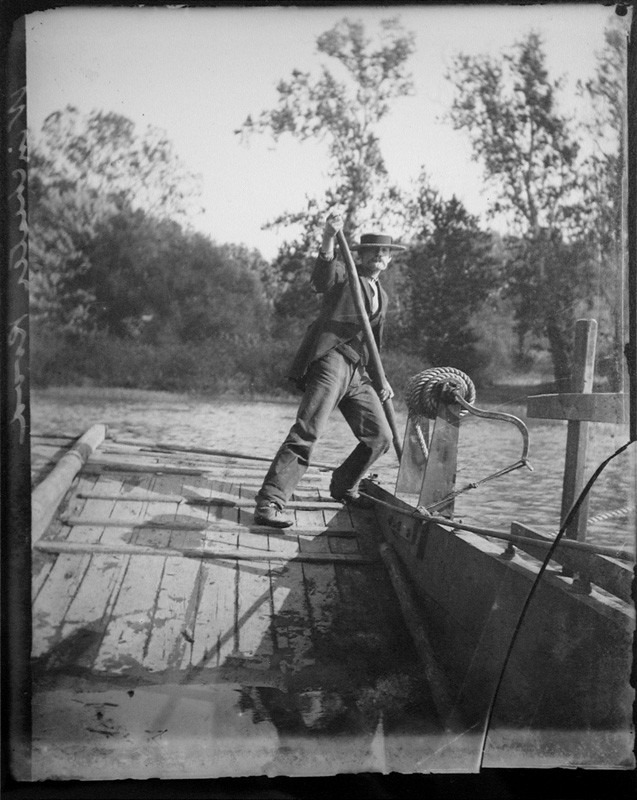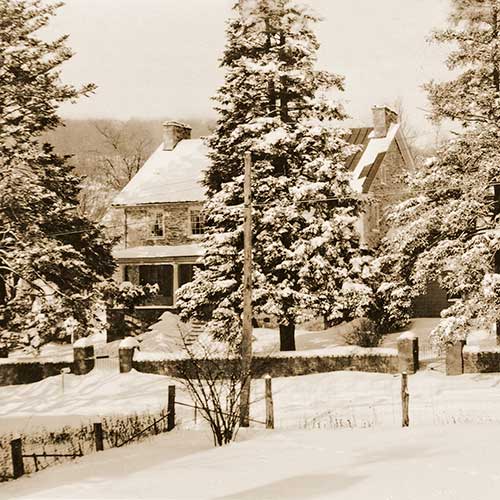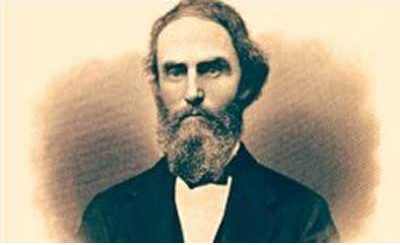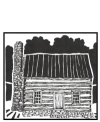Bluemont’s history has been shaped by many unique and fascinating people.
The stories they tell and the challenges they faced make each of them an integral part of our heritage. These are just a few of the people who helped shape Bluemont, and we will continue to add more stories as time goes on.

Edward Snickers (c. 1735 – 1790)
(There are no known images of Snickers. The photo depicts ferry man Maurice F. Castleman at Castleman’s Ferry, circa 1901.)
Edward Snickers purchased 624 acres of land in 1769, in what is now the area known as Bluemont. He operated the Shenandoah Ferry at the Gap and ran a tavern along the river. Initially referred to as a “yeoman” in early legal documents, by 1772 Snickers was recognized as a “gentleman.” Throughout his life, he was involved in many endeavors: hauling goods and produce for sale, operating a tavern, overseeing road construction, managing a ferry, and owning various businesses, including a merchant mill, blacksmith shop, grist mill, and sawmill. However, it was through buying and selling land that he made his fortune. Snickers married Elizabeth Taliaferro around 1755, and together they had four children.
George Washington traveled through Snickers Gap, a key landmark in the Bluemont area, during trips to survey land in the Shenandoah Valley. Washington knew Edward Snickers personally, and at least seven diary entries mention him or Snickers Gap, along with several surviving business letters from Snickers to Washington and Washington to Snickers.
In 1777, Snickers sold his 624 acres on the east side of the Blue Ridge to Richard Wistar of Philadelphia. In 1769, Richard’s son, Dr. Caspar Wistar, sold it to William Clayton, who established a farm just south of the Gap—now the site of present-day Bluemont village. It was Clayton’s son, Amos Clayton, who built the impressive stone manor house, Clayton Hall, still standing today at the corner of Snickersville Turnpike and Clayton Hall Road.

The Claytons
In 1813, William Clayton willed four lots to his children. In 1825, his son Amos Clayton donated half an acre of land for the construction of a school, a nondenominational church, and a village meeting hall—this became the Snickersville Academy. The original log structure now stands unattended across the turnpike from Clayton Hall. Additionally, the first postmaster was appointed in 1807.

The Plaster Family
Born near Unison in 1826, George Plaster graduated from the University of Maryland Medical School in Baltimore in the late 1840s. He practiced briefly in Unison before being struck by Gold Fever in 1849. Along with 11 neighbors, he journeyed to California. After a rough and challenging adventure, George returned to Unison to resume his medical practice. He later moved to Snickersville, where he treated and cared for the sick throughout the community.
In 1873, Plaster married Sallie Taliaferro, and over the next 12 years, they had nine children, with one dying before the age of one, and the others living to adulthood. The family resided at Glenmeade, their home and the location of his office.
Plaster’s medical career came to a close when his fifth child, Henry Garrett Plaster, began his own medical practice. Together, father and son had a combined practice that spanned 100 years.
